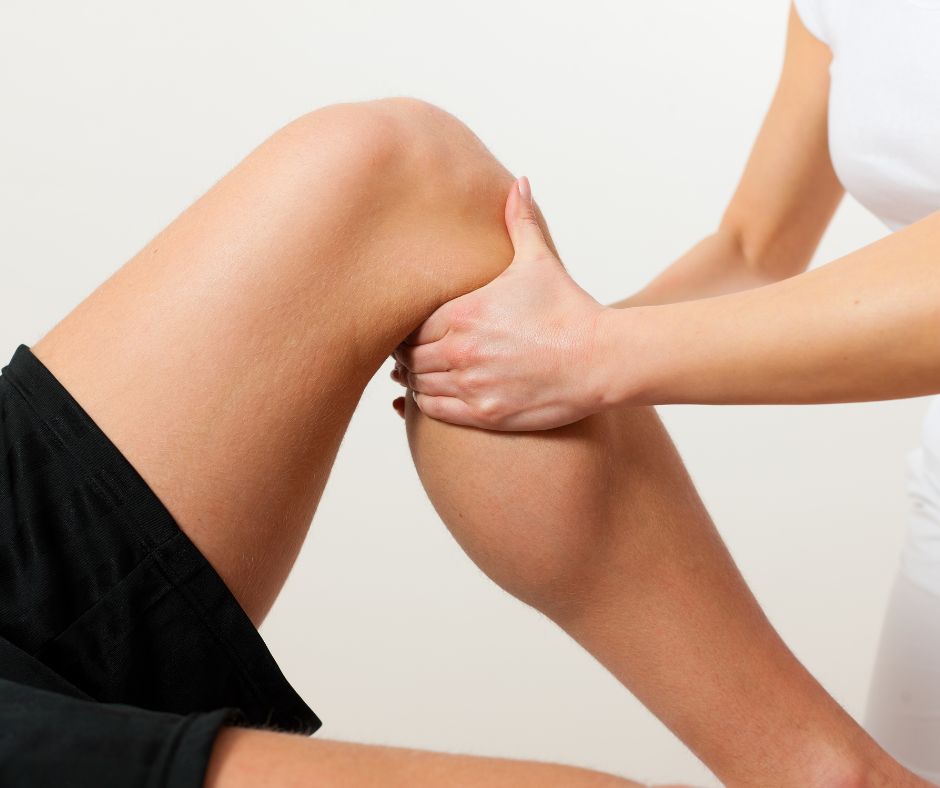Lymphoedema Post Orthopedic Surgery: Lymphatic Drainage and Physiotherapy
Recovering from orthopaedic surgery is not an easy task, whether it’s a hip or knee replacement, or even a fracture repair; it takes effort, time and a tailored-guided treatment plan. While the aim is to restore mobility and quality of life, the journey is not always straightforward. One of the most common complications patients encounter is lymphoedema which is a build-up of fluid that causes swelling, pain, heaviness, and stiffness in the operated limb.
If you are worried because after several weeks after surgery, you continue feeling uncomfortable, pain, swelling and tenderness in the affected limb. You’re not alone! Many patients experience this, and while it can feel frustrating, the good news is that lymphoedema is manageable. Today, we will talk about two therapies in particular, Manual Lymphatic Drainage (MLD) and physiotherapy, that can make wonders when used together. Let´s have a closer look…
Why does lymphoedema occur after orthopaedic surgery?
It’s normal to have some swelling after an operation, but in certain cases your lymphatic system struggles to cope. Surgery can damage small lymph vessels or nodes and inflammation can slow drainage (there are no paths where fluid can circulate and be drained out, so it gets stocked), reducing range of movement and causing pain and discomfort. If left untreated, this can slow down your rehabilitation and make it harder to get back to everyday activities.
The gentle power of lymphatic drainage
Manual Lymphatic Drainage (MLD) is a gentle form of massage designed to encourage the flow of lymph fluid. Using light, rhythmical strokes, the therapist helps guide fluid towards healthier lymph nodes where it can drain more effectively.
Patients often describe MLD as calming and soothing. Many notice their limb feels lighter and less stiff after just a few sessions. Its benefits include:
- Reducing post-surgical swelling.
- Reducing pain.
- Relieving pressure and discomfort.
- Supporting the healing process.
- Reducing the risk of infection, such as cellulitis.
- Improving range of motion.
- Boosting your immune system.
- Speeding up the recovery process.
- Reducing stress and anxiety.
- Improving your general well being.
By easing the swelling, MLD paves the way for physiotherapy to be more effective. Remember that MLD should be performed by a professional lymphatic drainage therapist certified in lymphoedema management, Seek the one who treats you better!
Physiotherapy: regaining movement and confidence
While MLD addresses fluid build-up, physiotherapy focuses on mobility , strength, and independence. After orthopaedic surgery, it’s natural to feel nervous about moving your operated limb. A physiotherapist will guide you at your own pace, ensuring you regain function safely and confidently.
Physiotherapy helps by:
- Encouraging circulation and lymph flow through safe exercise.
- Restoring flexibility and joint movement.
- Rebuilding muscle strength to support recovery.
- Teaching strategies to protect the operated area.
- Supporting your return to daily activities and routines.
Without physiotherapy, swelling can make it harder to move, and reduced movement can make swelling worse. This is why combining therapies is so effective. Keep in mind that it should be performed by a certified lymphoedema therapist.
Why the combination works best
On their own, both therapies are highly beneficial. But together, they complement each other beautifully:
- MLD reduces swelling, making it easier and more comfortable to move.
- Physiotherapy restores strength and mobility, preventing fluid from building up again.
- Together, they break the cycle of swelling plus stiffness, resulting in more swelling.
- The combined approach speeds up healing and lowers the risk of complications.
Many patients report that this integrated approach not only eases their symptoms but also gives them confidence and reassurance throughout their recovery journey.
Supporting your recovery at home
In addition to professional treatment, small changes at home can make a big difference:
- Wearing compression garments as advised.
- Elevating the operated limb when resting.
- Staying gently active with short walks or light movement.
- Practising good skin care to avoid infection.
- Listening to your body and pacing yourself.
Recovery is a process, and consistency is key. Even small steps each day will move you forward.
Lymphatic Drainage and Physiotherapy: A final word
Lymphoedema after orthopaedic surgery can feel discouraging, but it doesn’t have to hold you back. By combining lymphatic drainage and physiotherapy, you’re not just managing swelling; you’re also supporting your body’s natural healing, regaining movement, and reclaiming your independence.
If you’re experiencing persistent swelling after surgery, speak to your healthcare provider or ask to be referred to a lymphoedema specialist. With the right care, you can recover more comfortably and get back to enjoying life faster after surgery.
We hope this information is useful for you. If you need advice or have any questions about our treatments, please contact us. You can find us in Mill Hill Broadway and Islington. We are always happy to help. If you like this blog, please share!
Lymphatic drainage and physiotherapy: References:
https://pubmed.ncbi.nlm.nih.gov/33218497/
https://pmc.ncbi.nlm.nih.gov/articles/PMC4348127/
https://www.sciencedirect.com/science/article/pii/S277263202400031X
https://www.breastcancer.org/treatment-side-effects/lymphedema/reducing-risk/exercise
https://pmc.ncbi.nlm.nih.gov/articles/PMC8565523/



